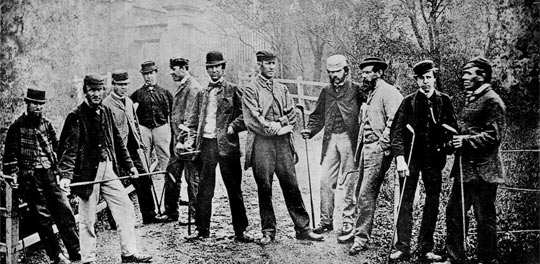Shining a light on Leith A Port with a right royal history.

From cobbled streets to castles and closes, Edinburgh is a city that attracts millions of visitors, year in, year out. Whilst the focus tends to be on Edinburgh Castle and the Royal Mile, just a few miles north of the city centre lies Leith, which contributes wholeheartedly to Edinburgh's historical past. From Kings and Queens to a bustling industrial heritage, Leith has so much to offer those of you looking to see a real slice of Scottish history. Councillor Gordon Munro of Leith Ward and Chairman of the EICC, is a third generation 'Leither' who knows the history of this former Municipal burgh inside-out. He shared some of his wisdom with Conference Call.
A royal port

"Leith was Scotland's royal port and has allowed many a king and queen to access our fair city. Mary of Guise ruled Scotland from Leith in 1560 and her daughter, Mary Queen of Scots, briefly resided in Lamb's House, before making her way onto Holyrood Palace.
"Mary Queen of Scots and Mary of Guise were just two of many royals who came through Leith. Queen Victoria and Prince Albert visited the burgh in 1842, and were embraced by the locals, so much so that the first statue of a woman in Edinburgh was of Queen Victoria, which can still be seen at the bottom of Leith Walk. Other monarchs to arrive in Leith included King George IV and the last Czar of Russia, Czar Nicolas II."
"King James I of Scotland liked Leith so much that he commissioned a building - the King's Wark - to be built as a place of residence. The remnants of the King's Wark are still there today - it is now an award-winning gastropub."
Gaming rules

"Of course, most people are aware that Scotland is the home of golf, but few people know that the official rules of the game were established right here in Leith in 1744. Formulated by the Honourable Company of Edinburgh Golfers, these rules were then adopted by The Royal and Ancient Golf Club of St. Andrews. These remain the rules of golf, except for one difference; one rule about hazards and trenches was omitted."
An independent burgh

"A separate entity from the city of Edinburgh from 1833-1920, Leith developed an identity that is still thriving today. The term, 'Leither', is one that was coined a long time ago, and people who come from Leith still refer to themselves as Leithers today. Although Leith is now very much part of Edinburgh, losing independence was something that Leith never wanted. A plebiscite in the Leith Observer in 1920 revealed an overwhelming desire to remain an independent burgh - only 4,340 were in favour of the merger, and a staggering 26,810 were against."
"Leith does still hold onto a little bit of its independent identity today. Dating back to its time as a royal port, it was essential that all of those coming in and out of Leith were protected during their time in the burgh. This fell to High Constables - a role that still exists today. Although there are Edinburgh High Constables, Leith still has its own, separate group of representatives, by way of the Leith High Constables. When High Constables are on duty, they must wear traditional dress, which includes top-hats, tails and batons - a little bit of history that's still very much alive in Leith today!"
Continue scrolling to discover more fun historical facts about Leith.
An industrious city,
Leith was also renowned for
the following business successes:

were produced in Leith at the Glasswork's peak in the 18th Century, most of which were exported to France and Spain for wine
 of all Scotch whisky, including Talisker and Laphroaig.
of all Scotch whisky, including Talisker and Laphroaig.

was established in Leith by Lachlan Rose in 1868 as a way to boost vitamin C levels in sailors

Leith's prime position allowed for whaling in the Firth of Forth and the Antarctic. Leith's whale ships also brought something extra special to the city - Edinburgh Zoo's 1st penguins, around 1900.







